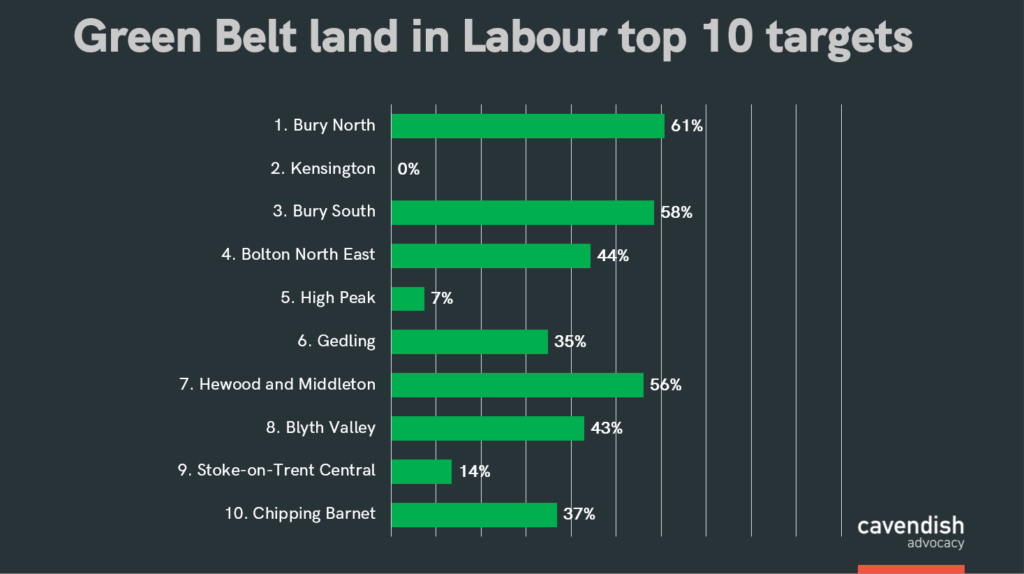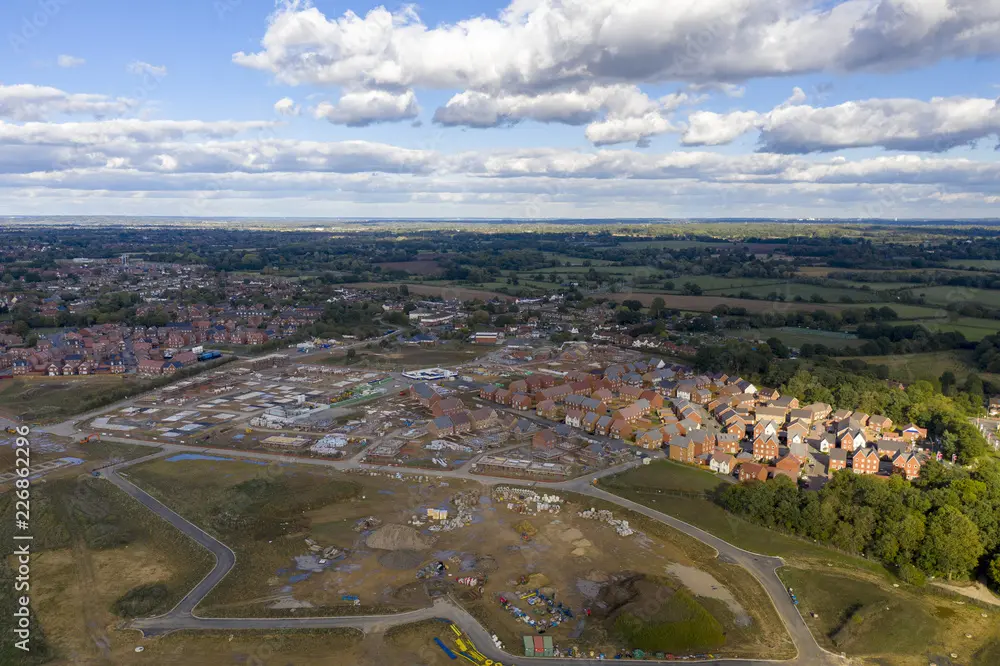In May 2023, Keir Starmer announced that Labour would “back builders, not blockers” and would give English councils more powers to build on the Green Belt if they come into power. It was a bold move – for years Governments have hinted at finally taking action before rolling back under pressure from their backbenches. On paper, Labour’s is a good policy. But if we look at the politics of the announcement, was it a savvy political move and will it help his electoral chances?
You can probably guess that the short answer is no. But here are some reasons why announcing this now (rather than waiting until they’re actually in power) might not have been a great idea for Labour – beyond simply being able to picture the Tory and Lib Dem leaflets saying “Labour will build on your Green Belt”.
The Green Belt is one of those things that really elicits an emotive response from a lot of people across the country. Despite being designed specifically to stop the unrestricted sprawl of built-up areas and prevent neighbouring towns from merging into each other, it has taken on a whole new meaning for some – being seen as synonymous with open green fields that make the countryside special.
But the reality of the Green Belt is more complicated. Yes, it has value in combatting the above, but in reality there is an element of it that is previously developed and, frankly, of little value. I once worked on a site in the Green Belt that was a car park next to a car factory and a power station, where one councillor remarked that “the only way this place will be Green Belt again is if [they] paint the concrete green”. Yet we were met with opposition throughout. It’s become more and more clear that the Green Belt needs reassessing. Not scrapping, just checking whether everything in it is worth saving.
Is the green belt really a big deal?
Only about 12.5% of land in England is Green Belt (and is on the up – growing for the first time in a decade last year), yet it’s one of the most emotive issues in housing.

This may be where part of the issue lies – do people think Green Belt means what it actually is, or do they think it means all green space? In reality, probably not. The fact that 20% of the population don’t know how they feel about Green Belt development potentially suggests they don’t.
Perhaps the reason it’s such an emotive issue politically is that it’s something that affects more than half of MPs in England, and our local election system – with elections pretty much every year, means that there’s never the space to actually have a balanced conversation about it. No local councillor wants to give their rivals the opportunity to say that they want to build over the Green Belt – even if it is a car park.
Green belt: who represents it?
A major reason why MPs are so scared to touch the Green Belt is that it affects so many of them. There are 319 seats in England that have some Green Belt land in them (out of 533), 188 of them are Tory seats, 120 Labour.
You can see why Tory MPs in particular want to preserve the Green Belt – 81% of Green Belt land falls in Tory boundaries, compared to 15% in Labour seats. So, while a larger proportion of Labour seats have Green Belt than any other party (69% of Labour seats vs 56% of Tory seats), they’re only talking about a tiny amount of land.

Which presents the next major challenge for Labour, and the main reason why this might have been a policy to keep in your back pocket until the next election: of the top 100 green belt seats, only 25 are Labour. Which brings me to:
Battlegrounds
Clearly, this is a policy that affects all parties, but is particularly emotive in Conservative areas, many of which Labour will be pushing for at the next election if they want to win a majority. So, you would think they would focus on pushing policies that appeal more to Tory voters. Especially in their target seats.
I hate to break it to Sir Keir but 9 of Labour’s top 10 target seats for the next election include Green Belt land. In 7 of these, more than a third of land is Green Belt.

So clearly in these seats there’s an easy win for the Tories if they want to go hard on anti-development rhetoric. The battle in these constituencies is not going to be subtle, so do not expect the incumbents’ activists to be nuanced in their messaging. There will be no “where appropriate” suffix on those Tory “Labour will build on your Green Belt” leaflets.
So in reality, Labour’s housing policy should probably be fairly quiet on Green Belt development. Especially given that…
It’s not a vote winner for anyone, anywhere
You probably could have guessed this, but there is very little public support for developing new homes on the Green Belt. A YouGov poll from last week highlights that just under 60% of the public oppose more housing on the Green Belt, with only 23% actually expressing support.

More than that though, it’s not something that wins in any voter group – ironically even fewer Labour voters support building more homes on Green Belt land than Tories (23% vs 27%) – and opposition is obviously stronger amongst Tory voters – 65% opposing to some extent.
Tory voters are also less likely to be undecided – only 8% ‘don’t know’, compared to 18% nationally, suggesting there’s little likelihood of this position changing.
Londoners are the most positive about Green Belt (32% at least somewhat support), though more than a fifth don’t know, while those key Red Wall areas in the Midlands and North that Labour needs to win round are in generally opposed.
Even amongst young people – for whom housing is now considered the second biggest issue facing the country according to YouGov – only 20% support more homes on Green Belt to some extent, with 40% of them having no idea.
Housing be a bigger issue at this election than at previous elections – now a top 5 issue nationally in YouGov’s tracker – so what parties say about housing will have more weight than normal. But there’s clearly much to be done on shaping the debate and understanding of key housing issues – which is not happening right now.
So ultimately, this is a policy that affects just a tiny bit of land but that has major political and public interest, appealing to no one. Far from winning Labour voters, it actually has the potential to lose them votes and hamper their chances in those all-important target seats.
If you would like to find out more about the impacts of new policy announcements ahead of the next election, contact us here.




